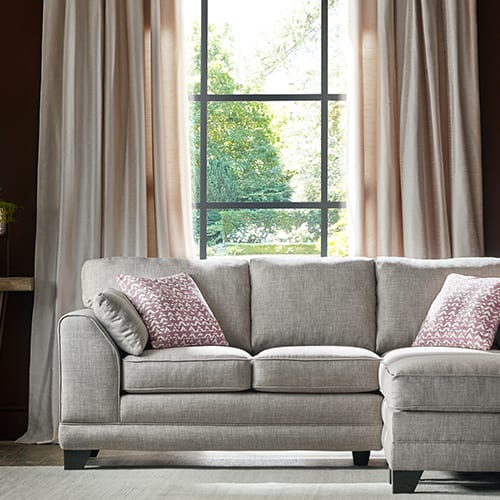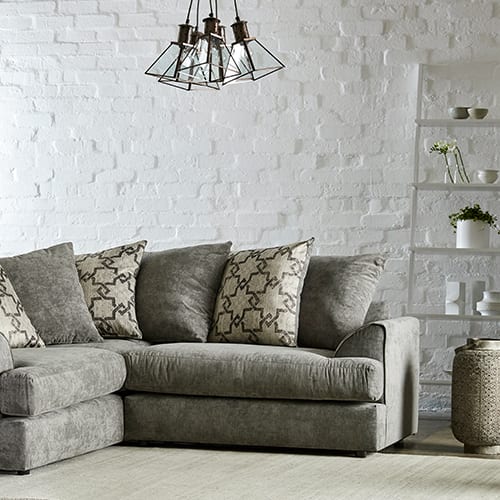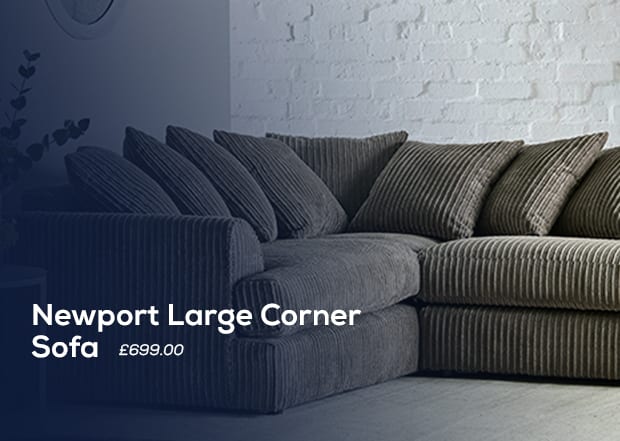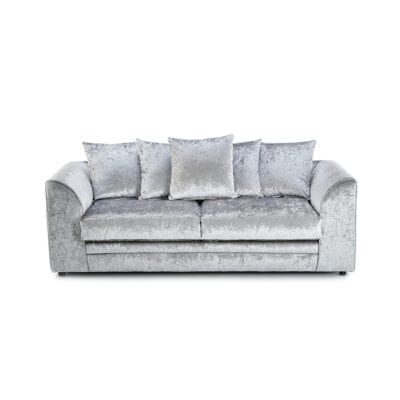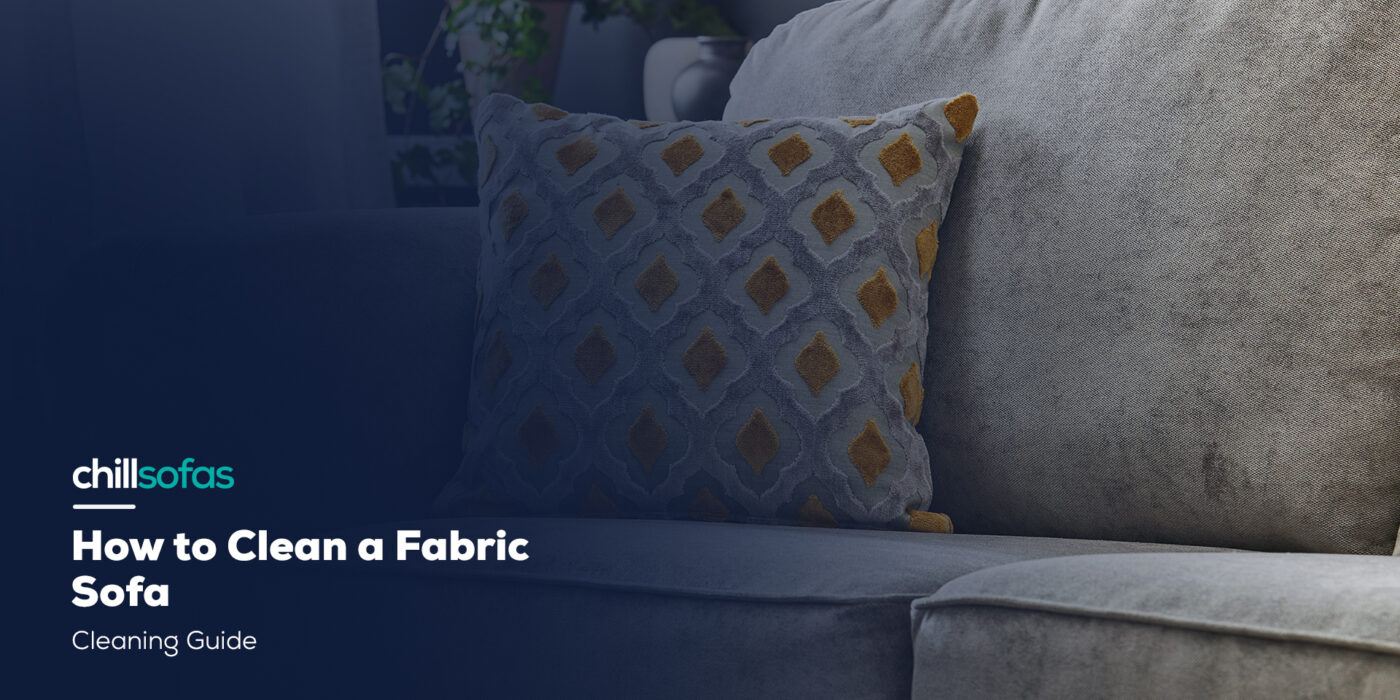Are Sofa Covers Machine Washable?
Spots, stains, and spills on your sofa are inevitable. But what do you do when your sofa cover gets dirty?
Well, sofa covers are machine washable – you’ve got to take some precautions before you throw them into the machine!
In this article, we’ll cover:
- Whether or not you can machine wash your sofa covers
- How to clean your sofa covers in the washing machine
- Our top tips.
Let’s get into it!
Is It Okay to Machine Wash Sofa Covers?
The easiest method of cleaning a sofa cover would be to just put it through the washing machine — but is this safe? Or is it going to damage your sofa cover?
It Depends on the Type of Fabric
There is no catch-all rule for washing sofa covers. Since sofa covers are made with different types of fabric, they all have different specific ways they need to be cared for.
Some fabrics are fine to be put through a machine cycle, while others are more delicate and are therefore strictly hand-wash only.
Check the Label First
Checking the label on your sofa cover is an absolute must. This will tell you exactly how to care for the cover and prevent you from damaging it by cleaning it incorrectly.
This label can generally be found on the underside of the main section of your sofa. This typically means they will be attached to the bottom of the seat cushions, near the back and sides of the sofa.
If you cannot locate the label, the information can often be found on the manufacturer’s website.
Follow the Indicated Cleaning Code
Located on the label will be a cleaning code, which is where you will find all the information regarding how to care for your sofa cover.
This cleaning code will consist of a specific code: W, S, S-W, or X.
- W
This indicates that you should only use a water-based solution to clean the cover. For this, you could use soap, dish liquid, or a type of water-based upholstery cleaner. - S
This is the solvent indicator, meaning you should use water-free solvents to clean this. Rubbing alcohol and dry-cleaning solvents are ideal for this type of fabric. - If the fabric is smooth, like leather, then you may also use baby wipes to clean it.
- S-W
This key indicates a combination of both solvent and water, meaning you can use either or both to clean this fabric. Any of the wet and dry options listed under ‘W’ and ‘S’ are appropriate for this fabric. - X
This code means that the fabric should only be cleaned by a vacuum or a brush. - If you spill a liquid on this type of fabric, this unfortunately means that it will require specialist equipment to clean, and you may have to pay the dry cleaners a visit.
How to Clean Sofa Covers in a Washing Machine
Say you’ve gotten a spill or stain on your sofa cover and want to machine wash it — how do you go about this? Can you just toss it in and put it through a normal cycle? It’s not necessarily that simple.
Make Sure That the Tag Allows It
First things first, always check the tag and make sure the fabric of your sofa cover is machine washable.
This is vitally important, as machine washing the wrong type of fabric can cause tears, discolouration, and shrinkage.
Vacuum the Sofa
Giving your sofa cover a vacuum before popping it into the machine will remove any debris and ensure your washing machine doesn’t get clogged up with dander or pet hair.
It doesn’t have to be super, thorough — just a light vacuum will do.
Use a Hair Removal Tool to Eliminate Pet Hair (Optional)
If you have pets that shed on your sofa, you’re definitely going to want to clear this off before putting your covers in the machine.
If a vacuum doesn’t cut it, use a pet hair tool to ensure that this hair is off your cover before you wash it.
Remove Any Stains Using an Upholstery Cleaner
A simple machine wash might not be able to combat particularly stubborn stains. Use an upholstery cleaner or stain remover to break down any harsh stains.
Just be sure to check that any product you use to spot clean is safe for the fabric.
Zip Up the Sofa Covers and Put Them in the Machine (Without Overfilling)
You only need to wash the outside of the sofa covers, so ensure they are zipped up to prevent the zips from getting pulled out of shape.
Then you can pop the covers in the washing machine, but be careful not to overfill — just one large sofa cover or a few small cushion covers at a time!
By overcrowding the machine, you run the risk of the covers not being washed properly.
Set the Washing Machine to a Delicate Cycle and Cold-Water Wash
A delicate cycle and cold-water wash are preferable for sofa covers. These covers are typically fragile, and by doing a cold and delicate cycle you prevent damage, tears, shrinking, and stripping of the colour.
Add Mild Detergent
Since this sofa cover is likely going to have a lot of contact with your skin, it is ideal to use a mild or sensitive detergent.
This also avoids the risk of harsher detergents affecting the fabric and draining the colour or impacting the texture.
Take the Sofa Covers Out to Dry in the Open Air Once the Cycle Has Finished
Be sure to only air dry your sofa covers. Any form of dryer or intense heat will cause many fabrics to shrink, and they will no longer fit on your sofa and cushions.
Hanging them out on a washing line for a few hours will ensure that they keep their original size and shape, and won’t do any damage to the fabric.
Tips on Washing Sofa Covers
If you’re particularly apprehensive about washing your sofa cover – or if none of the previous advice has worked for you – then here are our top tips:
Contact the Manufacturer
Either visit the website or give the manufacturer a call or email with any specific questions you may have.
There may be a blog you can visit to answer these questions or a company email you can contact.
This is the best way to get the most accurate information regarding your sofa cover, directly from the source.
Only Remove the Sofa Cover if It Is Detachable
Be sure you are only removing your sofa cover if there is a zip, buttons, or other means to safely and easily remove it.
Take care not to tear your covers when removing them, as it may damage your sofa and make the cover difficult to put back on!
For leather sofas and other fabrics that aren’t detachable, you may have to spot-clean them by hand. Double-check the fabric tag to see what kinds of products you can use.
Look Into Professional Cleaning
Depending on the fabric and the type of cleaning needed, you may have to have your sofa professionally cleaned.
Luckily, you can find deals on professional sofa cleaning — the manufacturer may even be able to suggest a good company!
Remember to Spot Clean Stains
Cleaning as you go can be a great preventative measure to lighten the load when it comes to cleaning your sofa cover.
Wipe up spills and spot clean stains as they happen to prevent the formation of stubborn marks and make the next machine wash a bit easier.
Key Takeaways
Cleaning sofa covers can be a finicky process. How you go about it is entirely dependent on the fabric and cleaning instructions.
The first thing you should do when it looks like you need to clean your sofa cover is to check the cleaning code.
From here you can figure out whether you can do a machine wash, or if you have to bust out the spot cleaner and give the sofa a wipe down.
If you spot-clean or vacuum your sofa regularly, you shouldn’t have to worry about washing the cover too much — a full clean every month or so will suffice.
If you’re at a loss when it comes to cleaning your sofa, hopefully our tips will help! Your sofa will be crisp and clean again in no time.

